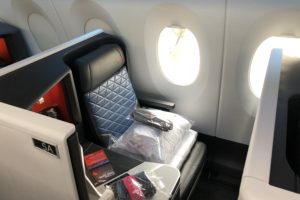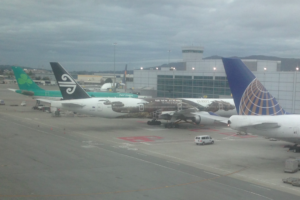Which Airports Have United States Preclearance, and Is It Worth Going Out Of Your Way For?
US Pre-clearance is currently available at 15 airports (and one port in Victoria, Canada) around the world. As the name suggests, pre-clearance allows passengers to clear immigration and customs at the origin airport and then not have to clear it when entering the United States. Therefore, passengers can arrive as a US domestic flight and do not have to clear immigration at their destinations. This can work for the United States because all internationally arriving passengers in the United States have to clear immigration (whether you are connecting on to a different country or not), unlike airports such as Frankfurt or Singapore where if you are continuing on to a different country (or outside the Schengen zone), you don’t have to clear immigration. Talk of instituting US pre-clearance had been going on since the 1950s and began a few years later in Toronto. Currently, there are 15 airports with US pre-clearance in Canada, Ireland, the Bahamas, Bermuda, and Aruba. So what airports have US pre-clearance, and what are the benefits of it?
How It Works
US Pre-clearance is pretty straightforward in most cases at airports where they have it. Here are the steps that are taken to pre-clear the United States at airports outside of the United States:
- Clear Regular Security & Immigration: The first thing you will have to do to pre-clear immigration is the regular security and immigration for that airport. When you depart most airports internationally (outside of the US), you have to do immigration to exit the country. That means that you will have to clear immigration twice at the same airport: once exiting the country and once entering the US.
- Look For The US Pre-Clearance Zone: At that point (at most airports with pre-clearance), you are dropped off in the regular international departures area. You will now have to look for signs that say US Preclearance and go there.
- Clear Security (Sometimes): At some airports outside of the United States (although I don’t think that in Canada you have to clear security again), you will have to clear security again. This happens at most other airports internationally including many airports with US Preclearance. Please note that at most airports with pre-clearance, TSA PreCheck is not available.
- Clear Immigration: At that point, you will have to clear US immigration. It should be business as usual in terms of United States Immigration and isn’t really any different from clearing it at a US airport. It’s important to note that now all airports with pre-clearance have Global Entry.
- Possible Checked Baggage Search: In the meantime, while you are clearing immigration, an officer checks your bag for explosives and possibly for inquiry and inspection (essentially customs). If they note any suspicious baggage, during immigration, you will be called back to answer questions about your baggage. This is rare and most likely will not happen to you.
- Board Flight: At this point, you will be let out into a special pre-cleared zone of the airport. It usually is its own separate terminal at the airport or is located above or below the normal terminal. You then will board the flight to the United States. Since it is a domestic flight at that point, duty-free is not available.
- Arrive In The United States: After you finish the flight, you will be dropped off at the airport as a domestic US flight. That means that you can exit the aircraft and head straight to the baggage claim without having to go through customs or immigration. This is especially convenient for airports such as Washington National or New York LaGuardia which do not have immigration facilities of their own.
- Reminder: It Is Mandatory: Just to make it clear, US pre-clearance on flights that offer it is mandatory. You can’t just board a flight with US pre-clearance and say, “Oh, I’ll clear immigration in the US, not in Dublin.” That’s impossible as the flight, once passengers are pre-cleared, is technically a domestic US flight.

Which Airports Have US Pre-Clearance ?
As stated earlier, US pre-clearance is available at multiple airports in Canada, the Caribbean, Ireland, and Abu Dhabi. Here is a full list of the airports which feature US pre-clearance:
- Calgary International Airport
- Edmonton International Airport
- Halifax International Airport
- Montreal Trudeau International Airport
- Ottowa International Airport
- Toronto Pearson International Airport
- Vancouver International Aiport
- Winnipeg International Airport
- Grand Bahama International Airport (Freeport)
- Lynden Pindling International Airport (Nassau)
- L.F. Wade International Airport (Bermuda)
- Queen Beatrix International Airport (Aruba)
- Shannon Airport
- Dublin Airport
- Abu Dhabi International Airport
As you can see, by far, the country with the most pre-clearance locations in Canada. That does make a lot of sense since Canada shares the largest border with the United States and is very politically and economically close with the US. No other country has more than two pre-clearance locations besides Canada. However, there is one major Canadian airport missing from the list–Toronto City Airport, the hub of Porter Airlines. The Bahamas has two at its largest airport, and Ireland has two in Dublin and Shannon. One interesting fact to note about Shannon Airport pre-clearance is that British Airways’ flight from London City to New York JFK (on an A318) stops in Shannon westbound, where passengers disembark and clear US immigration. The airport that may have stuck out to you most in Abu Dhabi. The airport opened it in 2014 and was created on the basis of extra convenience for Etihad’s flights to the United States.

There has been talk of adding pre-clearance at other airports. Most of the airports which have expressed interest in adding US Pre-clearance facilities probably won’t get it soon, for various reasons. However, Stockholm Airport probably is most likely to open soon, as it actually has hard plans to do so (including an agreement that would make Sweden the second European country to have US pre-clearance), and there was talk that it would open in 2019, although I haven’t heard anything about it recently. The following airports have expressed some interest in having pre-clearance facilities:
- Brussels Airport
- Punta Cana Airport
- Narita International Airport (Tokyo)
- Amsterdam Schiphol Airport
- Oslo Airport
- Madrid-Barajas Airport
- Stockholm Arlanda Airport
- Istanbul Ataturk Airport
- London Heathrow Airport
- Manchester Airport
- El Dorado International Airport (bogota)
- Ministro Pistarini International Airport (Buenos Aires)
- Edinburgh Airport
- Keflavik International Airport (Rekjavik, Iceland)
- Mexico City International Airport
- Milan-Malpensa Airport
- Kansai International Airport (Osaka)
- Rio de Janeiro-Galeão International Airport
- Leonardo da Vinci-Fiumicino Airport (Rome)
- São Paulo-Guarulhos International Airport
- Princess Juliana International Airport (St. Maarten)
That’s a rather long list of airports that want US pre-clearance, and I’m sure that some will happen, but most probably won’t for a rather long time. Firstly, I’m sure that some of the Caribbean and Central American airports will be among the next to get it, such as Punta Cana or St. Maarten. I am sure that over the course of the next few years, some more European airports will get it, such as (possibly) Reykjavik (it would be fairly easy to do so since they already have a dedicated area for US departures), Brussels, Edinburgh, Manchester, or as discussed above, Stockholm. However, I would highly doubt that London Heathrow would get pre-clearance, as US-bound flights depart from four terminals there.
My Experience With US Preclearance
I’ve personally had mixed experiences in the times that I’ve done US pre-clearance. The reason why I am writing this article at this exact time is that just a few days ago, I did US pre-clearance in Dublin. For me, that experience was pretty good. However, I did have two advantages that most people didn’t have. Firstly, I was traveling business class, so there was no line for the extra security checkpoint. When I cleared immigration in Dublin about two years ago (traveling in economy class), that line took about 15 minutes. I then had to clear immigration. Both times when I pre-cleared in Dublin, I had Global Entry, so I was through immigration within five minutes both times. However, the regular line was really long, and I could imagine that it would sometimes take 45 minutes to over an hour in US flight rush hour period. While the whole process only took a few minutes for me, it easily could take well over an hour for people without Global Entry.
I have had experiences where regular lines didn’t seem too long. At Calgary and in Abu Dhabi, the two airports where I’ve pre-cleared relatively recently, both had shorter immigration and security lines. I do love US pre-clearance because it means that you when you get back to the United States, you can connect without having to clear security and immigration again or you can leave the airport faster. That makes pre-clearance amazing for connections in the US – I was easily able to make an hour long connection in Chicago coming from Calgary.

However, if you have a short connection at airports outside the US with pre-clearance, such as Dublin, Vancouver, or Abu Dhabi, then the connections might be harder. Recently in Dublin, I met a couple of people with short (1.5 hours) connections to the US. With my inbound flight into Dublin arriving 20 minutes late, those people had only a bit over an hour to clear security, US immigration, and reach the gate after running through all of Dublin airport. Once in the pre-cleared area, I saw dozens of people running to their gates, and even a few who had just missed their flights. My point is that you always have to plan in more time for connections or should arrive at the airport early when you have to pre-clear US immigration unless you have Global Entry and/or are in a premium cabin. Overall, I would say that connecting through an airport with US pre-clearance it is worth going out of your way for if you have a connection in the United States or if you are traveling in a premium cabin, but isn’t necessary if you are in economy class or if the arrival point into the US is your final destination.
US Pre-Clearance Pros and Cons
As discussed in the previous section, clearing US immigration abroad has many advantages and disadvantages. Compiled below is a list of advantages and disadvantages of US pre-clearance, both for passengers and from the CBP.
Pros
- Benefits According to The CBP “(The) DHS firmly believes that establishing Preclearance operations in strategic locations will assist our efforts in identifying terrorists, criminals, and other national security threats prior to their boarding an aircraft bound for the United States, and is a critical step in DHS’s continued efforts to enhance national security and facilitate growing international travel and commerce.”
- No Need For Immigration In The US: The ability to clear US immigration abroad allows passengers to be able to not have to clear immigration in the United States, so they can immediately arrive as a domestic flight and leave the airport quicker. This also sometimes has the advantage that at most US pre-clearance locations, the lines are shorter than a lot of immigration checkpoints within the United States, such at New York JFK Airport.
- Faster Connections Within The US: US pre-clearance additionally has the benefit that you don’t have to re-clear security (unless changing terminals) and clear immigration at airports within the US when connecting. That means that you can easily make connections as short as one hour (or less) without having to clear immigration.

Cons
- Plan Accordingly For Connections Abroad: The biggest downside for US pre-clearance is that (as stated above) extra immigration and security abroad does take up extra time. That does mean that some shorter connections at airports that don’t have US pre-clearance, such as in Munich or Madrid, aren’t as feasible. You also will have to arrive at the airport a bit earlier if you are originating for the US at an airport with pre-clearance.
- No Duty Free Onboard: As technically the flight will arrive into the US as a domestic flight, duty-free items for purchase are not available onboard US pre-cleared flights.
Conclusion
US pre-clearance is an innovative way to clear US immigration abroad. I would personally say that it does come with more pros than cons, such as being able to make faster connections within the US and not having to wait in such long immigration lines at the destination. US pre-clearance is beneficial especially if you are arriving after a long haul flight and you are tired and don’t want to wait in a 2-hour line. However, you should plan accordingly when making connections abroad. US pre-clearance is currently available at 15 airports around the world in Canada, Ireland, Abu Dhabi, and the Caribbean, and I hope that it will expand to more airports within the near future.
Do you enjoy using US pre-clearance?




